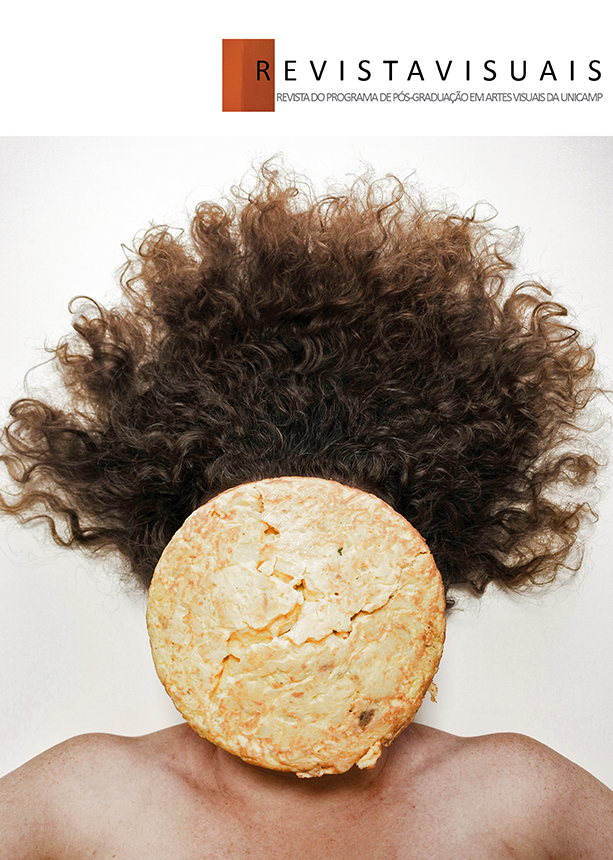Resumen
La fotografía nunca ha sido solo un registro pasivo de la realidad. Es un campo de disputas, desplazamientos y reinvenciones, donde se cruzan la historia, el arte, la política y el afecto. Los portafolios y artículos publicados en esta edición revelan cómo la imagen fotográfica trasciende su materialidad para convertirse en un dispositivo crítico, capaz de cuestionar narrativas hegemónicas, subvertir tradiciones y reconfigurar nuestra relación con el tiempo, la memoria y el espacio. En esta edición, Antonio Anson nos invita a reflexionar sobre el desplazamiento como eje central para comprender la transformación de las imágenes. Cuando la visualidad renuncia a la narración lineal, surgen las vanguardias, sustituyendo la historia por el discurso —un gesto que el arte conceptual radicaliza, convirtiendo el objeto en palabra, la materia en idea. Este movimiento no anula la imagen, sino que la tensiona, exigiendo del espectador una postura activa, capaz de descifrar capas de significado más allá de lo visible. Así, necesariamente, un arte de ver desplaza la mirada y el eje del espectador, colocándolo también como lugar del concepto. Wagner Souza e Silva nos recuerda que la fotografía es, ante todo, vibración. Al acercar la luz y el sonido, revela su naturaleza performativa, especialmente en contextos digitales, donde las imágenes laten en las pantallas, resonando como composiciones afectivas. Esta perspectiva nos lleva a preguntar: ¿no sería también la fotografía una partitura, una escritura de frecuencias y silencios? En contraste con la abstracción conceptual, Aline Gomes nos presenta la obra de Alair Gomes, cuyos retratos eróticos y colaborativos de jóvenes europeos reimaginan la tradición clásica. Su mirada flâneur capta no solo cuerpos, sino también deseos y complicidades, transformando la calle en un escenario de intimidad construida. Aquí, la fotografía es encuentro: un juego de seducción entre quien fotografía y quien es fotografiado. Sofia Borges radicaliza esta discusión al fotografiar fotografías, desestabilizando la noción de originalidad. Su trabajo actúa como una rapsodia visual, donde fragmentos se recombinan en nuevas narrativas, cuestionando la propia historia del arte. Al evocar los Sonidos de mármol, nos confronta con lo inaudible: el silencio de las esculturas clásicas, ahora resignificadas por el lente. En el mismo espíritu de intervención, mi "contribución" a la exposición Corps à corps en el Centre Pompidou (París) propone un rinoceronte digital como protesta contra el eurocentrismo de las colecciones museológicas. Aquí, la fábula es un llamado a la desobediencia: el arte debe invadir, perturbar, cuestionar los cánones. Paula Cabral, por su parte, entierra fotografías para explorar lo Unheimliche freudiano —el extrañamiento de aquello que alguna vez fue familiar. Sus "antirretratos" son vestigios de identidades en descomposición y afectos líquidos, metáforas potentes de las migraciones y los desenraizamientos contemporáneos. Fábio Gátti retoma a Barthes y su búsqueda de la madre perdida en la fotografía, recordándonos que la imagen es también duelo y Týkhe (azar). El esto-ha-sido barthesiano no es solo un índice de lo real, sino un gesto de resistencia contra el olvido. Finalmente, Isis Gasparini y Ronaldo Entler interrogan la flânerie en el siglo XXI: ¿aún es posible deambular contemplativamente en ciudades aceleradas? Revelan un esfuerzo metódico por resistir a la inercia urbana, incluso cuando el espacio ya no permite la deriva poética baudeleriana. Al final, ponen en escena la diferenciación de la mirada femenina en el proceso de la flânerie como una cuestión de género y afirmación feminista. Si hay un hilo conductor en estos trabajos, es la fotografía como acto político —ya sea por el desplazamiento, la vibración, la protesta o el duelo. A través de la intervención, nos obliga a repensar no solo lo que vemos, sino cómo miramos. En un mundo saturado de imágenes, quizás su mayor potencia sea precisamente la de hacernos desacelerar, cuestionar y, sobre todo, sentir.
Referencias
GOMES, Aline Ferreira. Alair Gomes em trânsito: a construção do retrato masculino na Europa. Revista Visuais, Campinas, SP, v. 11, n. 1, p. 6–30, [s.d.]. Disponível em: https://econtents.bc.unicamp.br/inpec/index.php/visuais/article/view/20656. Acesso em: 29 jun. 2025.
SOUZA E SILVA, Wagner. As tonalidades afetivas da fotografia. : Afinidades e (des)afinações entre luz e som na imagem técnica. Revista Visuais, Campinas, SP, v. 11, n. 1, p. 31–44, [s.d.]. Disponível em: https://econtents.bc.unicamp.br/inpec/index.php/visuais/article/view/20651. Acesso em: 29 jun. 2025.
ANSÓN ANADÓN, Antonio. Fotografia e relato. Revista Visuais, Campinas, SP, v. 11, n. 1, p. 45–55, [s.d.]. Disponível em: https://econtents.bc.unicamp.br/inpec/index.php/visuais/article/view/20654. Acesso em: 29 jun. 2025.
GATTI, Fábio. Barthes entre o luto e a Τύχη: A fotografia, o real e a imagem insistente. Revista Visuais, Campinas, SP, v. 11, n. 1, p. 56–80, [s.d.]. Disponível em: https://econtents.bc.unicamp.br/inpec/index.php/visuais/article/view/20653. Acesso em: 29 jun. 2025.
CURY DE TACCA, Fernando. A fábula do pequeno Sultão. Revista Visuais, Campinas, SP, v. 11, n. 1, p. 81–90, [s.d.]. Disponível em: https://econtents.bc.unicamp.br/inpec/index.php/visuais/article/view/20649. Acesso em: 29 jun. 2025.
ENTLER, Ronaldo; GASPARINI, Isis. O flâneur em crise. : Imagens arbitrárias em uma paisagem inapreensível. Revista Visuais, Campinas, SP, v. 11, n. 1, p. 91–103, [s.d.]. Disponível em: https://econtents.bc.unicamp.br/inpec/index.php/visuais/article/view/20652. Acesso em: 29 jun. 2025.
DOLENC CABRAL TACCA , Paula Cristina. Das Unheimliche. Revista Visuais, Campinas, SP, v. 11, n. 1, p. 104–116, [s.d.]. Disponível em: https://econtents.bc.unicamp.br/inpec/index.php/visuais/article/view/20655. Acesso em: 29 jun. 2025.
BORGES, Sofia. Rapsódia do Apagamento: Uma dança na caverna. Revista Visuais, Campinas, SP, v. 11, n. 1, p. 117–144, [s.d.]. Disponível em: https://econtents.bc.unicamp.br/inpec/index.php/visuais/article/view/20658. Acesso em: 29 jun. 2025.

Esta obra está bajo una licencia internacional Creative Commons Atribución-NoComercial-SinDerivadas 4.0.
Derechos de autor 2025 Revista Visuais


